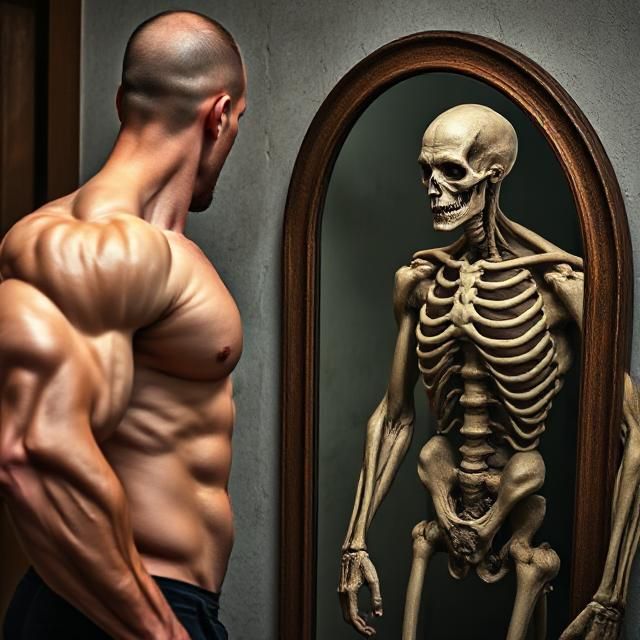Your cart is currently empty!

Bigorexia: When the Pursuit of Muscle Becomes an Obsession
This is a research recap of Š. Tovt & Kajanová A. Introduction to bigorexia. Kontakt. 2021;23(2):133-137. doi:10.32725/kont.2021.014
Bigorexia, a form of body dysmorphia marked by a relentless pursuit of muscularity, affects mostly men and is often accompanied by anxiety, depression, and an obsessive-compulsive spectrum disorder. Also known as muscle dysmorphia or reverse anorexia, bigorexia is a relatively recently defined disorder.
Those with bigorexia tend to be fixated on working out with weights and dieting. They may have a distorted view of their own bodies and be anxious about how others perceive them. There is some debate about the underlying nature of bigorexia. Some researchers believe that it is a type of eating disorder, while others see it as a form of obsessive-compulsive disorder, in that sufferers can be obsessed with certain actions, such as avoiding social events that interfere with their exercise schedule. There is also a risk of substance abuse, particularly anabolic steroids, which can lead to a variety of health problems.
While little research has been conducted on bigorexia , it is not a new concept. It was initially studied in the United States in the early 21st century. Here is what is known about the condition.
Prevalence of Bigorexia

Research in the Western Cape of South Africa found that 53.6% of amateur fitness competitors had signs of bigorexia. A study of bodybuilders in Italy showed a prevalence of 25.9%, and a Turkish study found that 58% of 120 bodybuilders met the criteria for bigorexia. Surveys like these suggest that bigorexia is relatively common among men who participate in bodybuilding. Symptoms of bigorexia can be present in women as well, although men are more likely to be diagnosed with the condition. This may be a result of the increasing pressure on men to be muscular. There is also a social component to the prevalence of bigorexia, as people with the condition often avoid places where they might have to reveal their bodies, such as swimming pools, locker rooms, and beaches.
Diagnostics for Bigorexia
Bigorexia is not classified as a distinct illness in the International Classification of Diseases. It is classified as a dysmorphic disorder in the category of hypochondriacal disorders. The Diagnostic and Statistical Manual of Mental Disorders, on the other hand, lists muscle dysmorphia as a type of obsessive-compulsive disorder. There are a number of diagnostic criteria for bigorexia, including an obsession with a nonexistent defect in appearance, judging one’s own body, impairment of functioning in social, work, or other areas of life, and an obsession with diet and exercise. There are also a number of questionnaires that can be used to assess the degree of bigorexia, such as the Drive for Muscularity Scale, the Adonis Complex Questionnaire, and the Muscle Dysmorphia Disorder Inventory.
Treatment
There is no comprehensive treatment plan for bigorexia at this time. Treatment approaches tend to be based on those used for obsessive-compulsive disorder, body dysmorphic disorder, and eating disorders. One option is cognitive behavioral therapy, which helps patients recognize distorted thinking. This type of therapy may be effective in the reduction of symptoms. In some cases, medications such as serotonin reuptake inhibitors may be used. These can be effective in treating the obsession and urge that is typical of bigorexia.